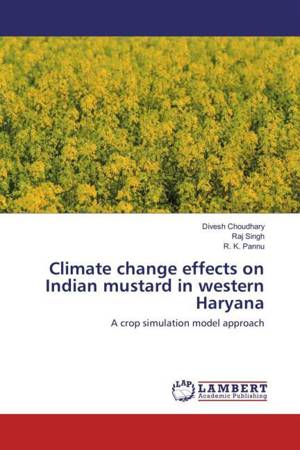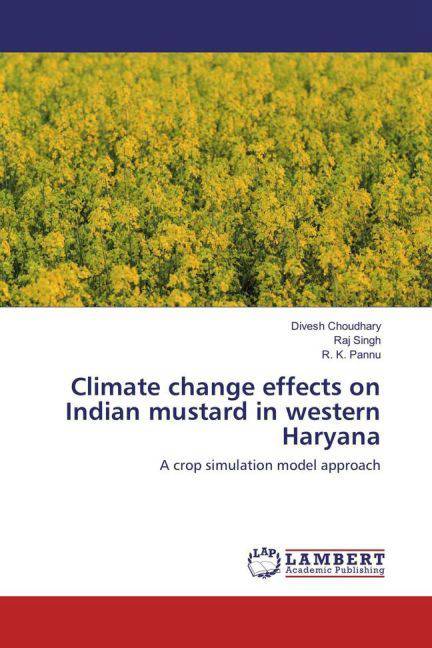
- Afhalen na 1 uur in een winkel met voorraad
- Gratis thuislevering in België vanaf € 30
- Ruim aanbod met 7 miljoen producten
- Afhalen na 1 uur in een winkel met voorraad
- Gratis thuislevering in België vanaf € 30
- Ruim aanbod met 7 miljoen producten
Zoeken
Climate change effects on Indian mustard in western Haryana
A crop simulation model approach
Divesh Choudhary, Raj Singh, R. K. Pannu
Paperback | Engels
€ 63,95
+ 127 punten
Omschrijving
The simulated results of Indian mustard crop by using InfoCrop and WOFOST model were obtained within the acceptable limit at Western Haryana conditions. So, both models proved to be valuable tool for predicting mustard yield for climate change study under projected climate change scenarios, whereas InfoCrop given the good response as compared to WOFOST model. The highest reduction in mustard seed yield was found in A2 2080 projected climate change scenario as compare to A1b 2080 and A1b 2030. Late sown (November) mustard crop showed more reduction in phenology, yield and yield attributes, whereas among the varieties, RH 0749 showed resistant to projected climate change as compare to Laxmi and RH 30. The net vulnerability of Indian mustard yield was -2.5 and -6.1% by using InfoCrop and WOFOST model under A1b 2080 projected climate change scenario, whereas -21.3 and -28.2% by using InfoCrop and WOFOST model under A2 2080 projected climate change scenarios.
Specificaties
Betrokkenen
- Auteur(s):
- Uitgeverij:
Inhoud
- Aantal bladzijden:
- 180
- Taal:
- Engels
Eigenschappen
- Productcode (EAN):
- 9783659952494
- Uitvoering:
- Paperback
- Afmetingen:
- 150 mm x 220 mm

Alleen bij Standaard Boekhandel
+ 127 punten op je klantenkaart van Standaard Boekhandel
Beoordelingen
We publiceren alleen reviews die voldoen aan de voorwaarden voor reviews. Bekijk onze voorwaarden voor reviews.








